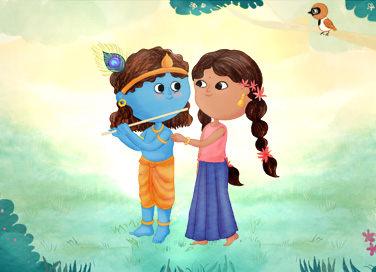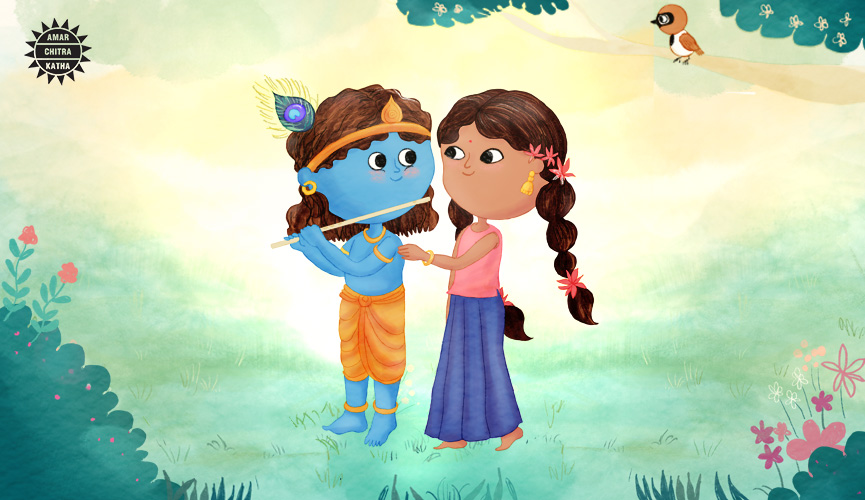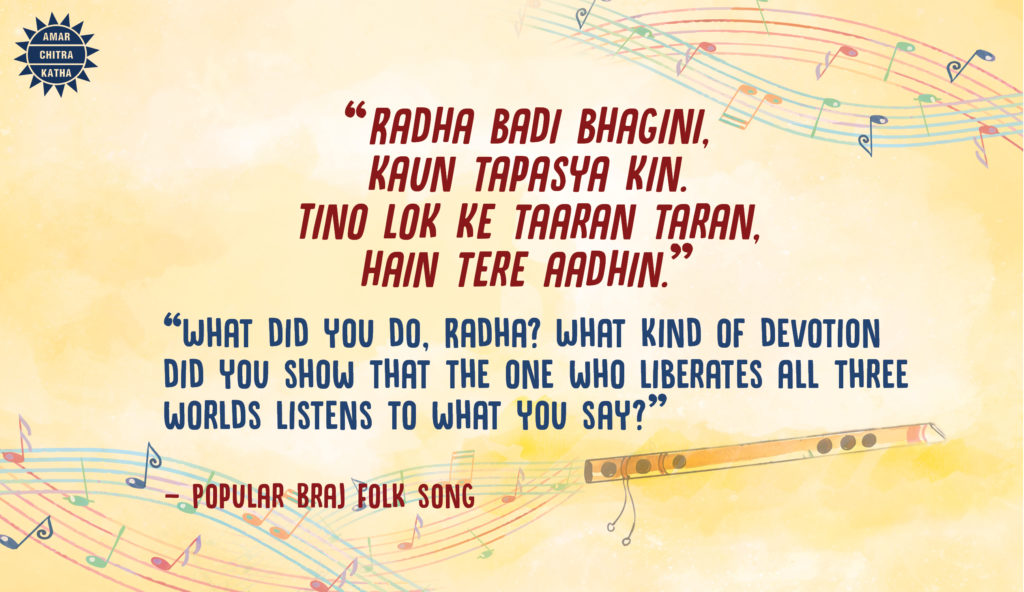Radha and Krishna: An Eternal Bond
- June 21, 2024


Radha and Krishna: An Eternal Bond
- June 21, 2024
By Tripti Nainwal
The story of Radha and Krishna is a well-known one, a tale of eternal love and devotion.
When Krishna was a boy living in Vrindavan, he spent his days tending to his cows and playing the flute. It is said that there was something extraordinary about Krishna – everyone who saw him fell in love with him! A mischievous child, he kept the villagers amused and entertained with his pranks.
To receive more such stories in your Inbox & WhatsApp, Please share your Email and Mobile number.
He was a favourite of all the women of the village, even though they complained to his mother that he stole butter from their homes. As he grew up a little, he also became a favourite of all the gopis or milkmaids who would be enchanted when he played his flute.
One of these gopis was Radha. According to some sources, she was born in Barsana in Uttar Pradesh. Her family moved to Vrindavan when she was about 12. From the time Radha and Krishna met, they were inseparable. Though Krishna was adored by all the gopis, it was Radha who stole his heart. Those early days are filled with stories of them sneaking out to meet each other in the forests of Vrindavan. As Krishna played his flute, Radha and the gopis danced around him in wild abandon. Once, each gopi wanted to dance with Krishna but he wanted to dance with Radha. So, he manifested so many versions of himself that every gopi thought he was dancing with her. Known as ‘Ras Lila’ or ‘The Dance of Divine Love’ these interactions are believed to depict the highest form of love. It is said that for Radha, every moment of separation from Krishna felt like an entire age. She did not want to even blink her eyes for it blocked her vision of him for a fraction of a second.

But Krishna’s life was not his alone. Soon duty called and he had to leave Vrindavan. It was time to kill his evil uncle Kamsa and set the world in order. He was never able to return to Vrindavan and it is said that the two never met again.
Why then is their story so endearing if it was just a simple childhood spent dancing around trees? Many sects in the Vaishnava tradition believe that Radha and Krishna took this form to teach the world about love and joy. The essence of Krishna is Joy and the essence of Radha is Love and Devotion. This kind of love and devotion causes a spiritual transformation in a person. According to Bhaktiyoga, it is the best way to know God.
Other theories view their relationship as the longing of the human soul for God. Since Radha and Krishna had to be separated, Radha must learn to see Krishna in all creatures and every aspect of the cosmos. Only when the yearning leads her (or the devotee) to see this truth, will they be united forever. In the Bhagavad Gita, Krishna says, “I am never lost to one who sees all beings in me and me in all beings, nor is that person ever lost to me.”

This aspect of love and longing has inspired endless creative outpourings down the centuries. Various styles of art such as Tanjore and Pichwai have Radha-Krishna as one of their main themes. Classical literature has eternalised their story. In the 12th century, Odia poet Jaidev was particularly instrumental in bringing their story to the masses. His ‘Geet Govinda’ caught both literary and popular imagination and put their relationship firmly at the forefront. Jaidev’s Radha is the Ashta Nayika or ultimate Heroine and several Indian classical dances have choreographed their dances based on her.
Such was their bond, that most Krishna temples have Radha at his side. Vaishnavites believe that it is Radha who carries their wishes to Krishna. They pray to her first so that she will put in a kind word for them. A popular folksong asks her, “What did you do, Radha? What kind of devotion did you show that the one who liberates all three worlds listens to what you say”.
Read more about Indian mythology only on the ACK Comics app!
To receive more such stories in your Inbox & WhatsApp, Please share your Email and Mobile number.

Comic of The Month
The Naval Journey of India Book I
This book is the first of a three-book series that takes a deep and detailed look at India's Naval History and a deep insight into the lives of our men and women in white. But any series on the Indian Navy has to start at the very beginning - exploring India's celebrated maritime history. Join our little hero, Bharat, and his grandfather, Commodore Sagar, as they sail into the deep blue waters of time. Book I of The Naval Journey of India takes a sweeping look at India's maritime endeavours, how the seas impacted us over millennia and how the oceans made us who we are.